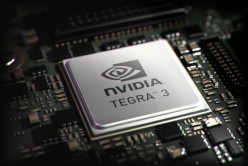The new GPU virtualization was created on its own merits, but could well be the answer to ARM limitations. Analysis by Alex Herrera.
By Alex Herrera
Nvidia fills its annual Graphics Technology Conference (GTC) with details on all kinds of uses for its GPUs. This year, the company showcased VGX, a technology for harnessing its new Kepler GPUs as remote renderers to serve many, potentially distant and heterogeneous client platforms. (See “Nvidia launches the Kepler era.”) Virtually every analyst and techno-rag in the business has opined on VGX, debating its merits and prognosticating on its long-term prospects.
But beyond all that’s been discussed publicly, there’s another strategic, under-the-radar angle on VGX to consider, one that doesn’t appear on any Nvidia marketing collateral and that no one is talking about. It’s one that ties in quite elegantly with Nvidia’s future direction hawking non-x86 platforms. Apparently the result of coincidence rather than intent, VGX may prove a valuable technology to help grease the skids for a future business thrust that will be even more critical to the company’s long-term prospects: Project Denver.
 With Project Denver, Nvidia promises a high-performance 64-bit version of ARM to challenge x86 for homes in mainstream, corporate, and consumer PCs, as well as workstations and servers. For Nvidia, it opens up much opportunity far beyond low-power mobiles. Nvidia’s first disclosures of Denver came on the heels of Microsoft’s early 2011 announcement that the Windows 8 generation OS would support ARM platforms in addition to x86.
With Project Denver, Nvidia promises a high-performance 64-bit version of ARM to challenge x86 for homes in mainstream, corporate, and consumer PCs, as well as workstations and servers. For Nvidia, it opens up much opportunity far beyond low-power mobiles. Nvidia’s first disclosures of Denver came on the heels of Microsoft’s early 2011 announcement that the Windows 8 generation OS would support ARM platforms in addition to x86.
Now, Nvidia has known for some time that a business model based solely on discrete GPUs wouldn’t sustain its market position indefinitely, particularly not in the age of microprocessors with integrated graphics, like Intel’s Sandy Bridge and Ivy Bridge, and AMD’s Fusion. That recognition drove Nvidia to ARM-based SoCs for mobile applications, and the result is the now-successful Tegra line. With Denver, Nvidia will be looking to push ARM further, and that’s a sensible strategy, given Nvidia’s rock-and-hard-place position at the moment.
The chances of long-term success through hitching its wagon to x86 are poor for Nvidia, given the daunting technical and legal challenges of being an x86 supplier, as well as the prospects of facing formidable Intel on its home turf. But the Denver option is a path rife with risk as well. ARM today is nowhere near ready for prime time duty in the enterprise, key obstacles being the aforementioned lack of 64-bit support, and the enduring demand for legacy x86 support. Nvidia and the ARM consortium can fix the 64-bit issue, but there’s absolutely nothing they can do about addressing the lack of support for legacy x86.
But here’s where the interesting synergy with VGX lies. Legacy x86 isn’t as big a problem when the x86 machine is no longer a physical x86 machine on the desk, but is a virtual x86 machine in the datacenter. Enable a more enterprise-acceptable solution for non-x86 clients, and those non-x86 clients will be more likely to proliferate … non-x86 clients exactly like the ones Project Denver is intended to spawn.

Nvidia itself points out that a key motivation behind VGX was to both enable and exploit the growing and inevitable trend of BYOD (Bring Your Own Device) in the enterprise. IT departments are struggling with managing the diverse array of heterogeneous clients that employees are bringing to work and demanding to use, including tablets and smartphones. With VGX, each client need only a VGX-aware Citrix or VMWare client, and presto, no more (OK, far fewer) worries about lack of legacy x86 out on corporate desks. Employees can bring their own hardware, and the company issues a PC “application” that runs on the VGX server, displaying on the client, regardless of hardware make-up.
Given how a technology like VGX will help to ease the implementation of heterogeneous, non-x86 enterprises, it’s not a big leap to wonder if greasing the skids for Denver was another (secondary perhaps) motivation for VGX. We asked Nvidia that very question — is VGX helping to pave the way for Project Denver? — and the answer was “no”. We believe the real answer is that VGX and Denver were parallel threads, promoted on their own individual merits. But we also imagine that Nvidia has some point recognized the positive role VGX could play in paving the way for Project Denver’s eventual high-performance non-x86 clients. And it will be keeping that in mind as it lays down the rest of its cards over the next couple of years.
Nvidia made the right call in not pursuing the x86 path. That’s not because the prospects of x86 are poor, but because the challenges and pitfalls associated with that path are extremely daunting. ARM was the next logical ISA choice, given that it represents on mobile devices the near-monopoly x86 does in corporate clients. Nvidia would love nothing better to cross over from mobiles to PC-class clients riding the back of ARM, and it will fix some of the technical challenges, like 64-bit, to make it happen. But in the end, technologies like VGX might prove just as critical in pursuing that goal, laying a more welcoming foundation for eventual Project Denver offspring in the enterprise.
Alex Herrera is a senior analyst with Jon Peddie Research. His work appears regularly in GraphicSpeak.





